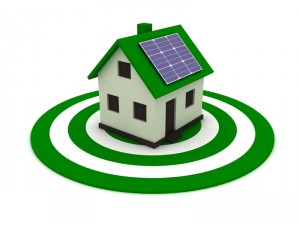 Designing the perfect energy efficient home
Designing the perfect energy efficient home
Saving energy in the home is not only about doing one’s bit for the future and for the planet – it’s also a way to make savings to the family economy in financially-strapped times.
Designing an energy efficient home does not require major architectural changes. Environmentally-friendly design is no longer a niche market; most of the products for maximising energy are freely available in most hardware stores and are easy to install without having to call in the professionals. Whether it’s energy efficient light bulbs or timers that switch off electronic equipment automatically when not in use, a small investment now can mean major energy savings in the future.
Insulation
In old, draughty houses, a substantial amount of heating is wasted simply because it disappears out of the house through gaps and cavities in the walls. Homes that are properly insulated require a considerably smaller amount of energy to heat. All cavity walls should have at least one layer of insulation, and attic spaces should be adequately insulated. Insulation is easy to buy in most hardware stores, and can be ordered direct from the supplier. While the most commonly used material is glass or rock mineral wool, a more eco-friendly alternative is cellulose fibre made from recycled newspapers. Insulation can be fitted professionally or by the homeowner, wearing a protective mask and gloves in the case of mineral wool.
Solar panels
Solar PV panels absorb the sun’s rays and convert them into electricity. It’s surprising how much power can be gained from the sun’s rays, even on overcast days. In fact, many houses with solar panels not only have enough energy to supplement the household’s electricity usage, but even have excess energy to put back into the grid, for which they are then compensated. So, while the cost of solar panels may seem high (upwards of £4,000 for a panel array that will provide approximately 3 kW of electricity), this is worth considering as a long-term investment that will continue to pay off long into the future. Panels vary in size and homeowners should seek professional advice on what installation is best for their household’s needs before making a purchase.
An energy-efficient heating system
Many old heating systems are wasteful, heating a home when no one is in. The first step is to replace the old boiler with a newer model that is more energy efficient. Secondly, better controls can be installed on heating systems, with automatic timers that only heat the home when needed, and that can be activated separately for the different rooms in the house.
Another waste of energy in old heating systems is corrosion and a build-up of scale in old radiators. A chemical inhibitor can be introduced into the heating system. This reduces the build-up of scale and sludge in both the boiler and throughout the entire system, increasing efficiency substantially.
Composting
Everyone should be familiar with the concept of sorting their household waste by now, but what if there were less in the bin come collection day? Almost all organic waste can be composted, i.e. placed in a bin in the garden to degrade. This includes not only vegetable peelings and banana skins but also tea bags, coffee filters, egg boxes, bread crusts and rice/pasta (keep container covered to prevent vermin). Leftover meat or fish, however, can introduce harmful bacteria to the compost.
Window treatments
Window treatments are not only decorative; they can help save energy by reducing heat loss and heating costs in winter and keeping the home cool without the need for fans and air conditioning in summer. Window awnings and blinds help keep a room shady during hot summer months, but possibly the most effective window insulation system is the use of exterior window shutters, which provide protection from the weather, insulation and added security, while taking up no indoor space. Solid shutters must be integrated into a home’s architecture, so the supplier should advise on how best to add them.
















